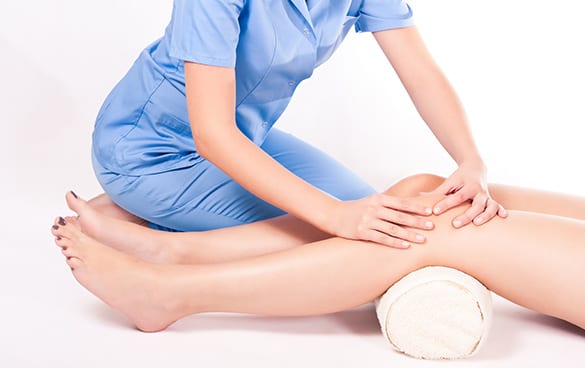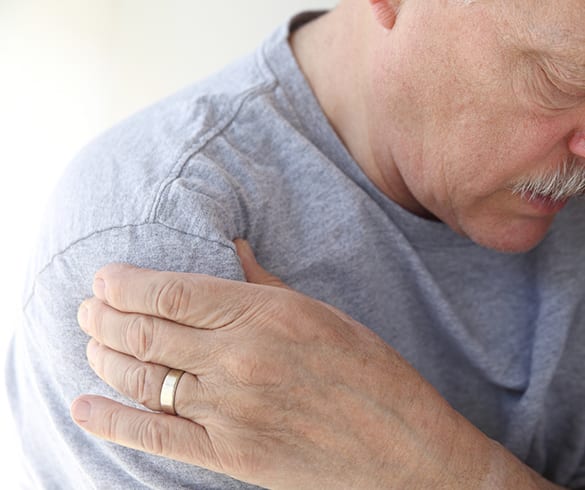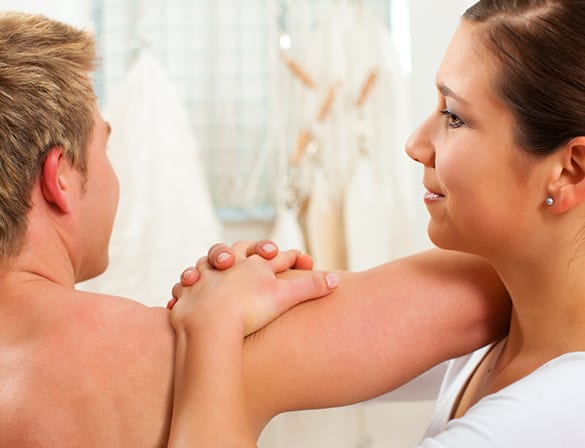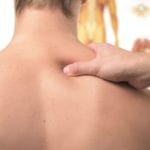
Find out how LA Orthopedic Group can relieve Bursitis flare-ups.
Usually affecting areas near joints in hips, elbows, knees, and shoulders, bursitis is an inflammation of small, fluid-filled sacs (bursae). Normally, the purpose of these sacs is to cushion muscles, tendons, and bones around joints and minimize friction. However, repetitious movements may lead to swelling and irritation around certain joints that affects bursae sacs.
- With feet, the condition may develop around heels or at the base of the big toe
- While bursitis is often a temporary condition, you may need further evaluation if you experience frequent flare-ups
CONTACT US TODAY
Common Symptoms
Persistent or recurring joint pain is typically the first sign of bursitis. If bursae sacs are irritated, discomfort may become chronic in nature and affect quality of life. Pain around the affected joint may be accompanied by stiffness, general aches, visible swelling and redness, and pain associated with movement. It’s a good idea to see a doctor if symptoms include:
- Severe or chronic joint pain
- Pain that’s getting progressively worse
- Sharp or shooting pain experienced with movement or when exercising
- A fever
Causes
Injury or trauma around joints may inflame bursae sacs. But the most common cause of bursitis is prolonged stress or irritation to tissues around joints, as may result from repeatedly throwing a baseball or from being in the habit of leaning forward on elbows. It can also be occupation-related due to tasks that need to be frequently repeated with the same basic movements.


Diagnosing Bursitis
Bursitis is diagnosed based on the symptoms presented along with a physical exam. Image tests are often performed to rule out other possible causes of joint pain that may produce similar symptoms. These may include X-rays to look for bone spurs and joint fractures, blood tests to rule out diabetes or arthritis, and an MRI or CT scan to view soft tissues. If it’s discovered that a bursae sac is inflamed, its fluid may be tested to rule out gout or an infection.
Treatments
In some cases, no treatment is required and bursitis will go away on its own. Initial treatment typically includes conservative remedies such as the use of anti-inflammatory drugs, cold applications to the affected area, and various forms of physical therapy. PT alone can include ultrasound, stretching exercises to improve joint and muscle strength, and massage therapy. If these treatments aren’t effective, corticosteroid shots that are placed directly into affected tissues may be recommended.
Warming up muscles and joints with a stretching routine before exercising is one way you may be able to prevent bursitis from developing. The condition may also be prevented by avoiding excessive strain and repetitious movements around joints and muscles as much as possible. When playing sports, wear proper protective equipment with sufficient padding and support. If you do experience discomfort around joints, rest for a few days and apply heat or ice to the affected area to ease swelling and improve circulation. Seek treatment if symptoms are severe or worsening.




